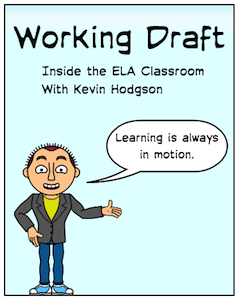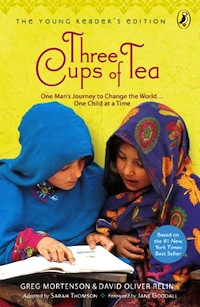Of Yooks, Zooks, and Geopolitics in the ELA Classroom
A MiddleWeb Blog

I was not all that surprised. The days of bomb drills (“All right, everyone duck under their desks”) and constructing home fallout shelters are long gone, thankfully.
Yet the Cold War lingers in news headlines. Russia’s recent push into the Ukraine has resonated with many of my students who are from families that have immigrated from Eastern Europe to our region of Massachusetts over the last decade. And it is being referred to in some media circles as an echo of the Cold War’s past.
A Cold War convergence
The Cold War concept came under the spotlight in my classroom as several events converged in the wake of the Ukraine crisis. First, we were celebrating World Read Aloud Day. Second, it was a few days after the celebration of Dr. Seuss’s birthday (the beloved storyteller would have been 110 this year).
Third, we were exploring literary terms, and allegory was still hanging out there for me to explain to sixth graders. And finally, we are reading a non-fiction book whose setting is a country that played a role in the Cold War, and whose political effects are still felt decades later.
And so, I turned to Dr. Seuss to help me explain both allegory and geopolitics by pulling out The Butter Battle Book as a read-aloud. This particular book, like Yertle the Turtle, are fairly unknown Seussian tales for adolescent readers weaned on Cat in the Hat, and movie adaptations of The Lorax and Horton Hears a Who.
If you don’t know it, The Butter Battle Book is about two nations — the Yooks and the Zooks — who live on either side of the wall and hate each other because one group butters their bread on the top and the other, on the bottom.
Classic Seuss.
The butter-filled story became the perfect allegory for a class discussion about the Berlin Wall, the nuclear arms race and the Cold War — those decades when the world was on edge as the Soviet Union and the United States played a global chess game over influence and power.
Three cups of inquiry
Which brings us to our book, the controversial Three Cups of Tea. Yes, we still read Greg Mortenson’s book (listen to my comments), but through a very critical media lens (see our Jog collection of resources) of accusations leveled at the story and the line between fiction and non-fiction in books.

And those U.S-funded weapons? Mostly, they fell into hands of the Taliban and others – an ancillary lesson around unexpected consequences. I’m not suggesting the United States is funneling arms to Ukraine, yet the parallels of the political stage are striking.
Helping students make connections from the ridiculous tale of Dr. Seuss to the tapestry of the geopolitical landscape in which they are immersed as readers to the headlines on the front page of newspapers became one of those wonderful learning convergences that happen every so often – the kind where all the threads come together.
Sure, I knew which threads to bring in to the discussions, and I had a sense of how to weave them together. And the end result, I hope, is a better understanding of history, politics, literature and current events.


































